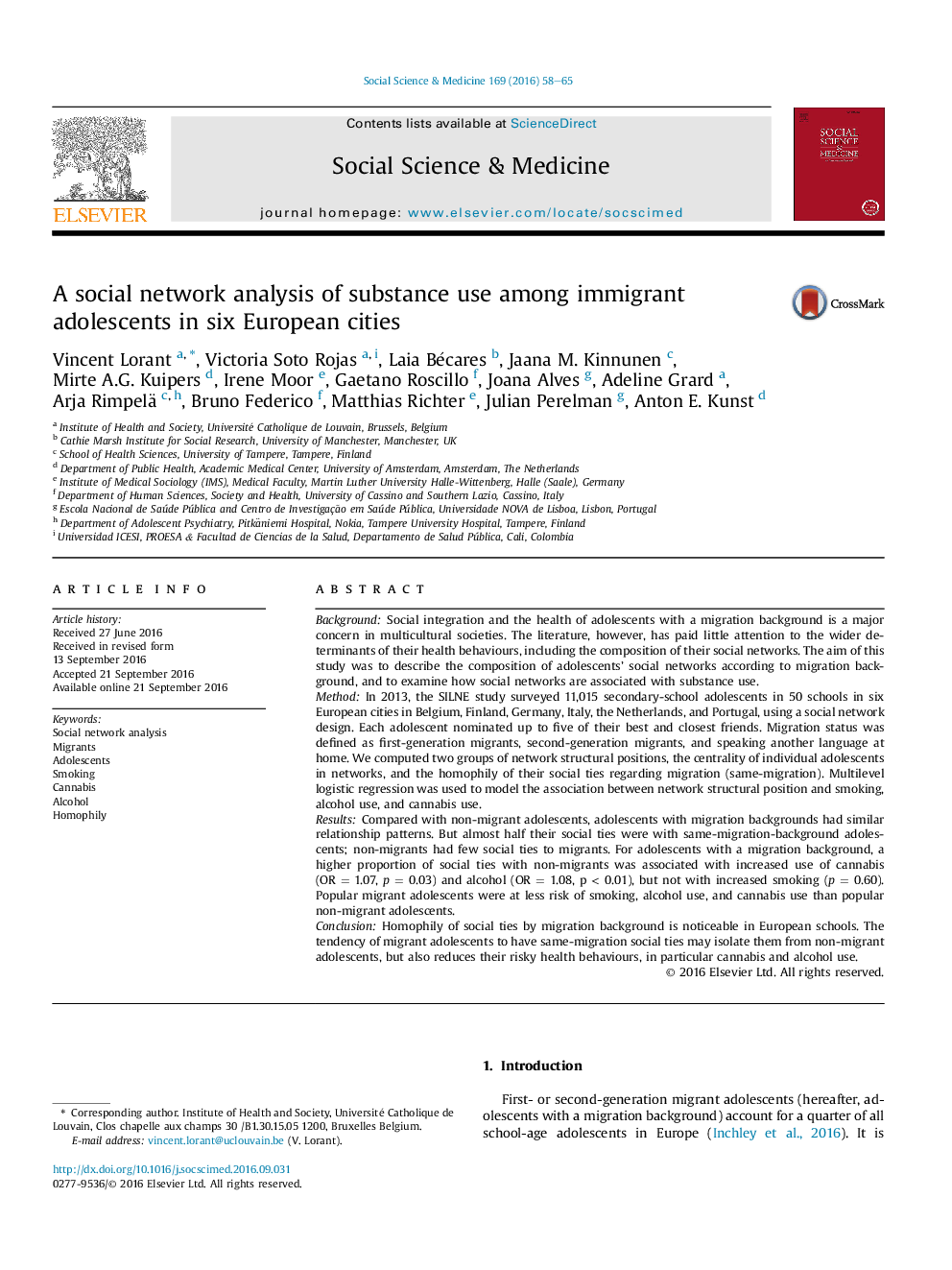| کد مقاله | کد نشریه | سال انتشار | مقاله انگلیسی | نسخه تمام متن |
|---|---|---|---|---|
| 5046890 | 1476000 | 2016 | 8 صفحه PDF | دانلود رایگان |
- Little is known about the role of social ties in migrant adolescent substance use.
- The pattern of social ties is similar between migrants and non-migrants.
- Most of the social ties of migrant adolescents are with other migrants (homophily).
- Homophily is associated with lower alcohol and cannabis use among migrants.
BackgroundSocial integration and the health of adolescents with a migration background is a major concern in multicultural societies. The literature, however, has paid little attention to the wider determinants of their health behaviours, including the composition of their social networks. The aim of this study was to describe the composition of adolescents' social networks according to migration background, and to examine how social networks are associated with substance use.MethodIn 2013, the SILNE study surveyed 11,015 secondary-school adolescents in 50 schools in six European cities in Belgium, Finland, Germany, Italy, the Netherlands, and Portugal, using a social network design. Each adolescent nominated up to five of their best and closest friends. Migration status was defined as first-generation migrants, second-generation migrants, and speaking another language at home. We computed two groups of network structural positions, the centrality of individual adolescents in networks, and the homophily of their social ties regarding migration (same-migration). Multilevel logistic regression was used to model the association between network structural position and smoking, alcohol use, and cannabis use.ResultsCompared with non-migrant adolescents, adolescents with migration backgrounds had similar relationship patterns. But almost half their social ties were with same-migration-background adolescents; non-migrants had few social ties to migrants. For adolescents with a migration background, a higher proportion of social ties with non-migrants was associated with increased use of cannabis (OR = 1.07, p = 0.03) and alcohol (OR = 1.08, p < 0.01), but not with increased smoking (p = 0.60). Popular migrant adolescents were at less risk of smoking, alcohol use, and cannabis use than popular non-migrant adolescents.ConclusionHomophily of social ties by migration background is noticeable in European schools. The tendency of migrant adolescents to have same-migration social ties may isolate them from non-migrant adolescents, but also reduces their risky health behaviours, in particular cannabis and alcohol use.
Journal: Social Science & Medicine - Volume 169, November 2016, Pages 58-65
